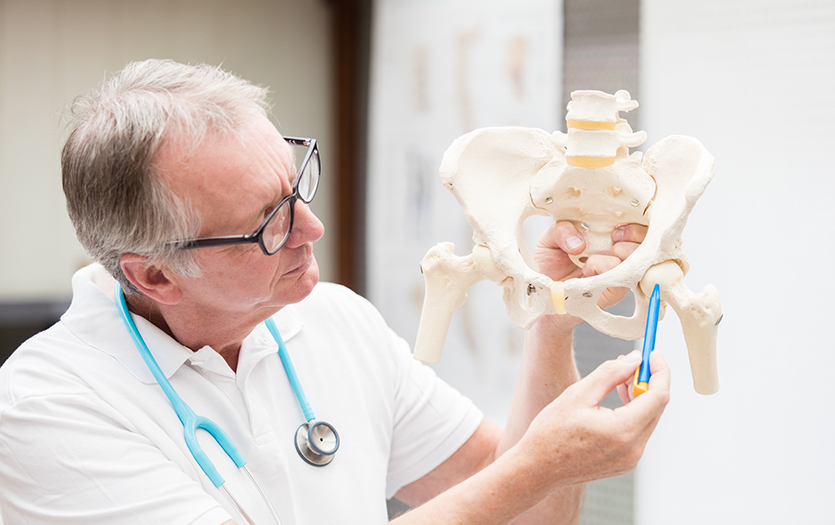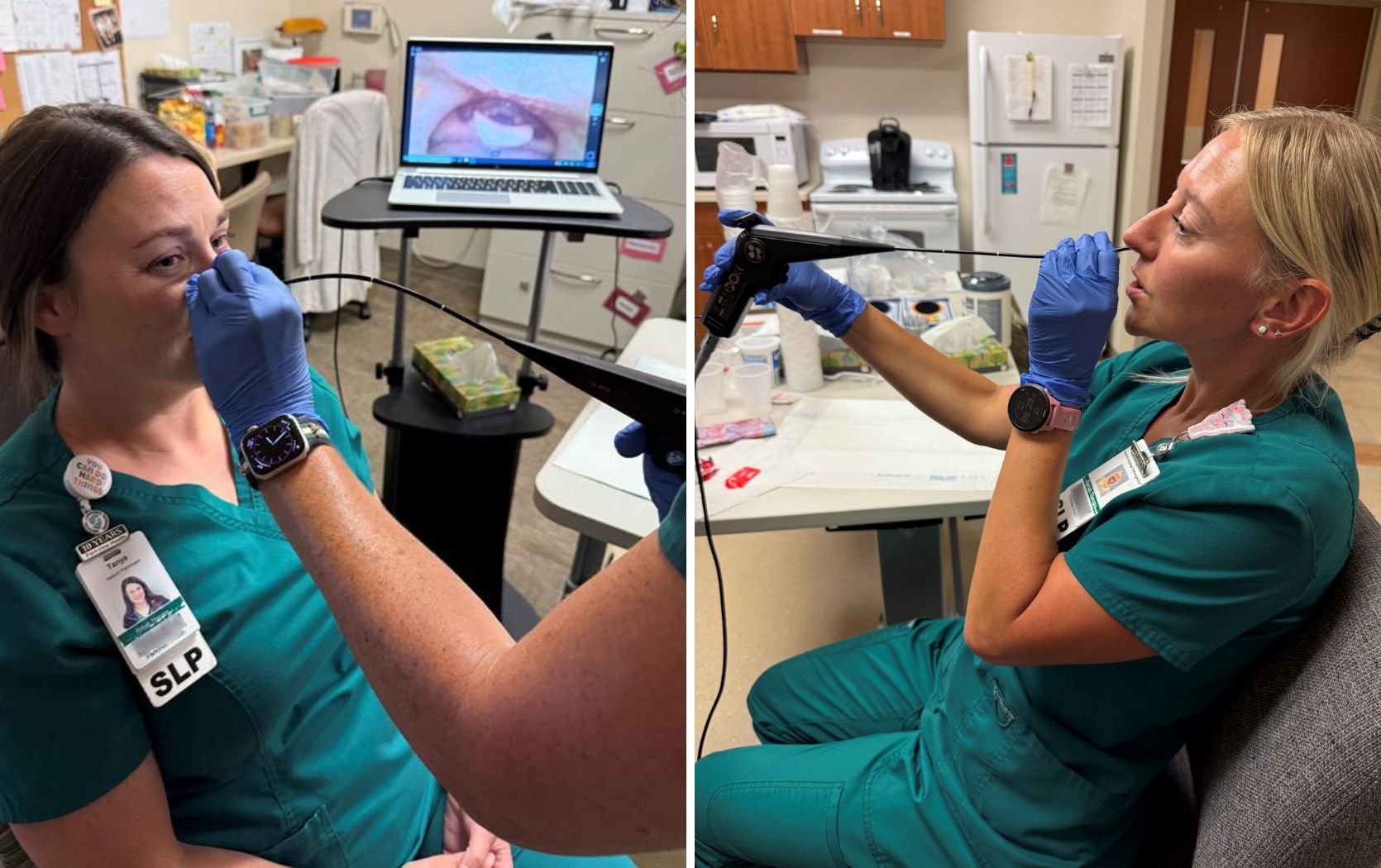
Consistent stiffness or discomfort in the hip, lower back and groin, could be a sign of degenerative arthritis or another condition best addressed with a total anterior hip replacement. Jason Heisler, MD, Orthopedic Surgery, Orthopedics NorthEast, discusses the risk factors for wear of the articular cartilage, treatment options from conservative to surgical, and the importance of seeking answers to relieve the pain.
How common are anterior hip replacements?
While an anterior hip replacement is used to treat hip fractures sometimes, a total anterior hip replacement is more commonly the treatment for advanced hip arthritis or another hip problem, like avascular necrosis, by means of hip arthroplasty.
Are there certain risk factors that put people at a greater likelihood of needing anterior hip replacement?
We’re often doing hip replacements for patients who have degenerative arthritis, which is commonly referred to as osteoarthritis. And that’s where the articular cartilage in the hip joint wears out, which is like the tires on a car going flat. Unfortunately, our patients can’t just drive through the rubber factory and get new tires. They have to come see us! When that articular surface of the joint is gone, it can cause a great deal of pain and inflammation in the joint, which requires aggressive treatment.
Aside from arthritis, there are some patients who experience avascular necrosis (death of the bone tissue due to a lack of blood supply), to the ball or head of the femur, which can cause significant complications that require anterior hip replacement. This is more common in younger patients, those who have taken high doses of steroids or have a substance use disorder and consume high amounts of alcohol.
Some young people are also born with a subtle deformity in their hip or experience some developmental changes that occur in their hip joints and require intervention.
At what point should a patient seek a medical consultation?
The most common symptom people have is groin pain or pain in the front of the hip, which is a common referral point for hip pathology. Some people come in and they point to their buttock or their lower back and say they have hip pain, but that's usually not an orthopedic issue tied to the hip joint.
Patients may have referred pain in the knee or even thigh. They often complain of stiffness when they get up in the morning, particularly if they were active the day before. A busy day of hiking, for example, might lead to extreme discomfort when they lay down at night. When you have that kind of discomfort or the symptoms are affecting your daily activities it's time to come in and see somebody.
What are the conservative options for treating hip pain?
There are certainly nonsurgical options that patients can try before exploring surgery. The first step in the treatment of any inflammatory condition, such as arthritis, is to try to control the inflammation. You can use an over-the-counter nonsteroidal anti-inflammatory like ibuprofen or naproxen sodium.
There are some prescription medications, including oral anti-inflammatories that can be helpful. Some people benefit from a short course of oral steroids, a powerful anti-inflammatory, but that's not really a good way to treat the condition long-term. I also don’t recommend using narcotics, which won’t manage inflammatory symptoms.
We also tell people to try modifying their activities. If you run five miles a day, five days a week and you're having a lot of groin pain, try changing your activity level and do less of that particular activity. Maybe do less loading of your joint, and opt for bicycling or swimming, an elliptical, something that’s lower impact. High-intensity jumping or training can aggravate joint discomfort.
Some people benefit from physical therapy, as core strengthening can be highly beneficial for soft tissue. Addressing excess weight and increasing flexibility can also offer some benefits.
The problem is, that a lot of patients already have severe wear from degenerative arthritis. There’s no such thing as regenerative arthritis, so therapy can’t reverse the core issue. It can help the soft tissues, but it cannot change what's happening to the bone and joints.
A step above the aforementioned strategies, but more conservative than surgery, would be injections. We don't always use intraarticular steroid hip injections, but it can be helpful in instances where we’re trying to determine whether the issue is in the hip or back.
What can you share about the benefits and approach of total anterior hip replacement?
Hip replacement in general is a great option for patients who have all the indications of a worn-out joint, and who have not had success with conservative methods of treatment.
There are some advantages to anterior hip replacement. The incision is placed in the front.
We go between muscles–we don't actually detach any muscles from the bone of the femur or the hip socket. With that, there's a decreased risk for post-op hip dislocation or instability, so our patients don’t have any limitations or restrictions to bending or twisting immediately after surgery. In addition, in my opinion, the fact that we don’t detach the muscles in the tendons makes it easier for these patients to get up and get moving sooner after the procedure. This equates to a shorter hospital stay, less time with a walker, less time on pain medication, and likely a faster return to work and activities. In fact, about 90% of my patients have the surgery as an outpatient and get discharged the same day.
But it’s not just me, the surgeon. It’s a combination of our anesthesiologists, nurses, office staff, patient educators, physical therapists, etc. It’s a total team effort, and it’s all about supporting not just the patient, but their family and loved ones as well.
What would you say to someone who is having hip discomfort?
We welcome everybody. Patients will come in concerned about wasting my time. But my time is dedicated to investigating the issue, educating you about the options and then making a plan together. And the truth is, there's so much information for people, and I encourage people to go out, read about it, look it up, talk to their friends, and then talk to us, use us as the expert and a sounding board. That's what your doctor should do for you. We are here to answer questions with you, whether that leads to surgery or not. If you’re in pain, we want to help, so don’t wait to seek a consultation.
To schedule orthopedic care in Allen County, call Ortho NorthEast at 260-484-8551 or click to request an appointment. To find orthopedic care outside of Allen County, click to view PPG - Orthopedics locations.



